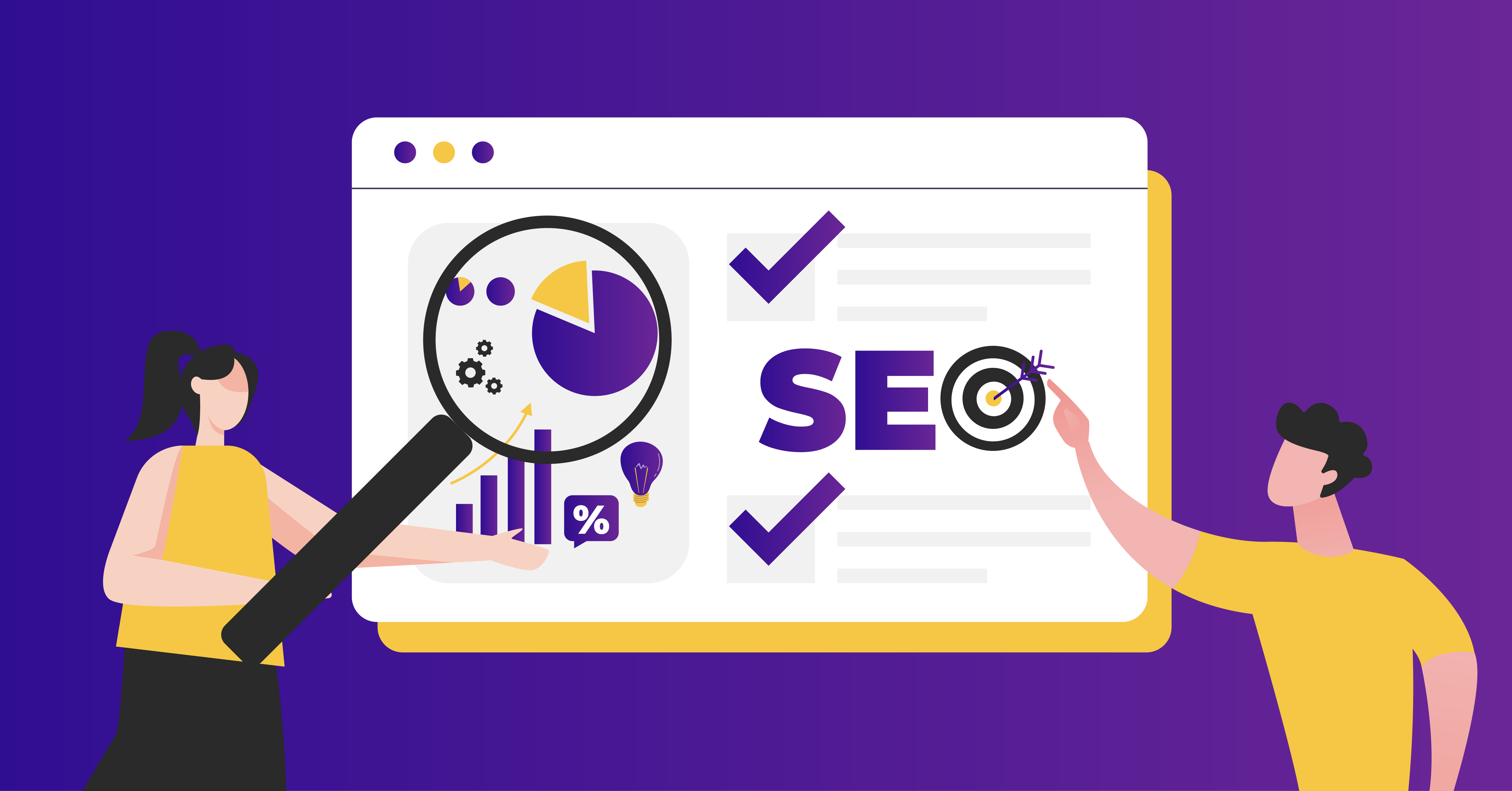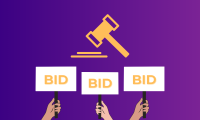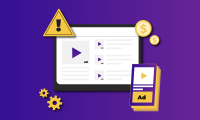Complete SEO Guide For Publishers in the Ad Tech Industry
Search Engine Optimization or SEO is the oldest trick in the book. It is the holiest grail of all for marketers. The internet is saturated with information today. The competition to secure the top positions in the Search Engine Result Page (SERP) is fierce. But with quality content and best SEO practices publishers, content creators, and brands can navigate their way to the top.
The objective of content is to provide a solution to a problem, answer a question, or fulfill a need that people search for on the internet. This objective comes full circle when the information reaches the audience. SEO can help to establish that.
What is Search Engine Optimization (SEO)?
In 2022, Google grabbed a huge majority of worldwide desktop search traffic with 84.08%. And with the advent of 5G as well as a spike in mobile usage, mobile devices can take up to 63% of organic search visits. This dominant search engine processes over 40,000 search queries in a second. Even though publishers create answers for these queries, Google is the answerer and provider in the true sense. How can publishers ensure that it presents their answer to the queries related to their content? Let’s peel back the layers on that.
SEO stands for ‘Search Engine Optimization’, which refers to driving traffic from free search results in search engines. It’s the process of optimizing a website to improve its visibility and ranking in search engine results pages (SERPs). The goal of SEO is to increase the quantity and quality of organic traffic to a website by making it more easily discoverable to users through search engines. It helps to make a website more attractive to search engines and to improve its relevance to specific keywords and phrases.
SEO is a marketing channel that every publisher must rely on. In today’s digital landscape, content leads the way. For publishers to be able to monetize their websites through ads, they need to first produce high-quality and relevant content. With contextual advertising gaining momentum, content has become the cornerstone of a successful monetization strategy as it helps to deliver relevant and personalized ads to users based on the content they are viewing or their search queries.
SEO is a vast and intricate landscape. To sieve the best strategies can be difficult. Here’s the SEO handbook that can help publishers of all sizes and niches to sail through today’s fluctuating and dynamic market conditions.
On-Page Search Engine Optimization
What is on-page search engine optimization?
On-page SEO is the technique that refers to the process of optimizing pages on the site to improve rankings and user experience. This practice refers to the page content as well as the HTML source code of a page. Both can be optimized for maximum efficiency. On-page SEO practices include the following:
- Conducting keyword research
Keywords are at the epicenter of SEO. Keyword research is an important step in SEO, as it helps content creators and publishers identify the words and phrases that their target audience is using to search for content related to their niche or industry. However, its usage and patterns keep changing with time and Google’s algorithm. To hit all the marks, here’s the checklist for a holistic keyword research approach.
- Identify the niche
- Use keyword research tools such as Google Keyword Planner and SEMrush
- Analyze search volume and competition
- Consider user intent
- Include different types of keywords such as primary, secondary, short-tail, long-tail, questions, and intent-targeting keywords
- Creating topical content
While keywords hold a lot of importance in SEO, for the best results they need to be inculcated in topical content. This is a semantic SEO practice that focuses on creating in-depth content. It focuses on the meaning and context and not just individual keywords. This helps the Google crawlers read your content better and push it to the top SERP if it is relevant and high-quality.
- Using header tags
Header tags make the content more readable, scannable, and accessible for users as well as Google crawlers. Header tags, such as H1, H2, H3, etc., are an important on-page SEO element that helps search engines understand the structure and hierarchy of your content. Here’s the checklist to use header tags appropriately.
- The H1 tag should only be used once per page and should contain the main topic or keyword of the page.
- H2 tags should be used to break up sections within the page and should contain subtopics related to the H1 tag.
- H3, H4, and other header tags can be used to further break down content into smaller sections.
- Optimizing keywords in SEO elements
Keywords need to be used across varied SEO elements throughout the page and should not be limited to the blog content. By optimizing keywords across the page, publishers are helping search engines to understand their content. This improves visibility in search results and the higher the visibility the higher the rankings in search results pages for relevant keywords. Publishers should optimize their keywords across the following SEO elements.
- URLs
- Alt tags
- Anchor texts
- Title tags
- Meta descriptions
- Interlinking
Interlinking helps publishers to structure the content, suggest related content to users, and engage them to spend more time on the website. Interlinking is an effective on-page SEO practice that helps publishers to enhance the user experience. It improves the website’s navigation, relevancy, and authority. By including relevant links within the content, publishers are helping Google to crawl the content better.
- Enhancing user experience
A seamless user experience can help publishers drive higher click-through rates (CTR), engagement, and conversion. On-page SEO can be more effective with better UX. Here’s how publishers can achieve that through varied factors:
- Improving site speed
- Adding concise but informative headlines
- Using relevant media
- Using white space to navigate the eye
- Making the website mobile-friendly
Off-Page Search Engine Optimization
What is off-page search engine optimization?
Off-page SEO refers to any SEO technique conducted outside of the publisher’s website to increase its visibility. Google’s algorithm takes into account a variety of signals to determine the relevance and quality of a web page. These signals include both on-page and off-page factors. Here are top off-page SEO practices for publishers:
- Link Building
Link building is a very prominent and result-driven off-page SEO practice. It is also known as generating backlinks. A 2020 research by Backlinko found that pages with lots of backlinks rank above pages that don’t have as many backlinks. In fact, the #1 result in Google has an average of 3.8x more backlinks than other positions. The key to building quality backlinks is to ensure the links are appearing on high-quality websites. Google determines the relevance, authority, and ranking of the publisher’s content based on the quality of the website or web page where the backlink is generated.
- Guest Blogging
Guest blogging or guest posting is an off-page SEO practice wherein the publishers write a piece for another website or blog page and plug their own link. This becomes easier if publishers have online relationships with other websites or content creators. The quality of the content should be double-checked before publishing it on the guest site. Guest blogging helps publishers reach a new audience, increase their website authority and build an online community.
- Directory Submissions
This off-page SEO practice involves submitting the website’s information, such as its name, URL, and description, to online directories or web directories, which are sites or portals that organize and categorize links to other websites. Publishers have to manually submit their information to relevant directories, ideally for the same niche as theirs.
- Cross-platform promotion on social media
Social media is a valuable channel in many ways. Publishers or content creators must build their social media presence and direct their audience to their websites. This cross-platform promotion helps them build backlinks, and awareness, as well as a community. Social media signals, such as shares, likes, and comments, also play a role in off-page SEO. These signals help Google understand how people are interacting with a website or web page and can be an indication of the quality of the content.
The end result of a good SEO can be scaled across two results- high ranking and user satisfaction. When these results are top-notch, publishers can monetize their content and generate incremental revenue. Conducting SEO can be a walk on a tightrope. But regular content auditing and staying current with market trends, algorithm updates, and consumer behavior can help establish a balanced, sustainable, and valuable approach.




Leave a Reply